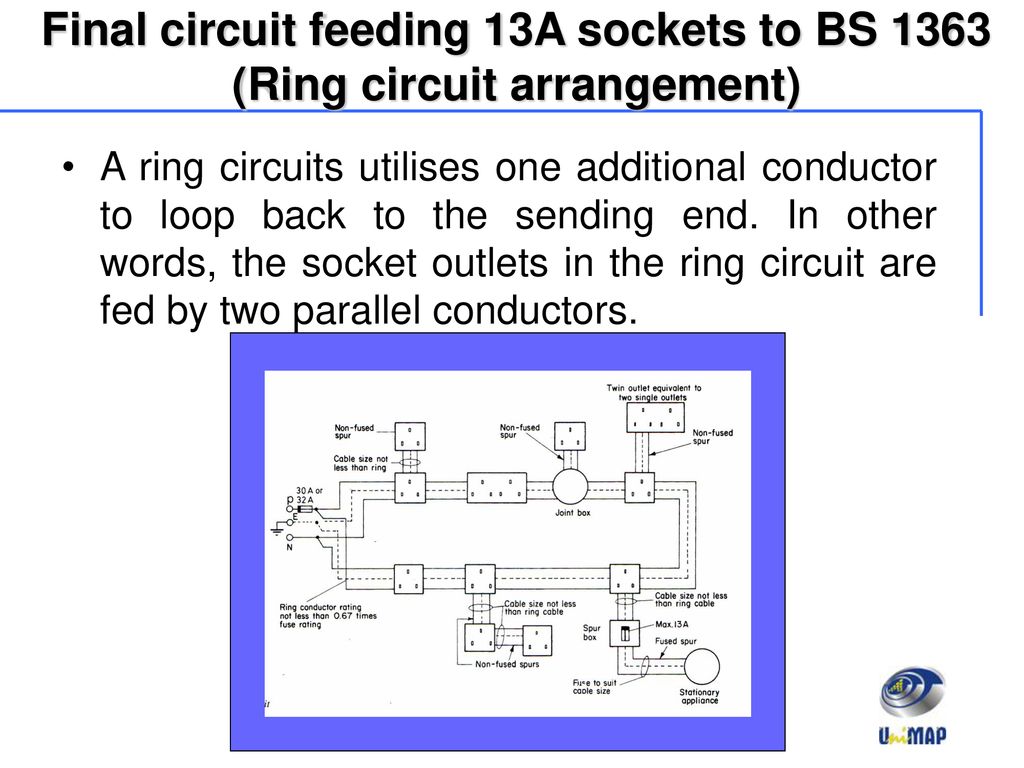The main purpose of a spur is adding an extra socket on to an existing ring main circuit.
Socket ring main wire size.
Its simplicity makes it a great arrangement for that use.
The ring circuit is still the most common mains wiring configuration in the uk although both 20 a and 30 a radial circuits are also permitted by the wiring regulations with a recommendation based on the floor area served 20 a for area up to 25 m 2 30 a for up to 100 m 2.
Ring mains as they are called are a series of cables linked together starting and terminating at the same point in a distribution board.
The size of cable used for sockets needs to be larger than that used for lighting circuits because that it will have to cope with more load due to the number of different appliances with different power supply needs that could potentially be plugged in.
This size is not rated at 30a but as there are two paths from the breaker to any socket either side of the ring it s a safe configuration.
In most domestic situations the cable size used for sockets on a ring main or radial main is 2 5mm twin and earth cable.
The uk only normally uses 13a sockets and conventionally these are wired using the ring main scheme on a 30a or 32a fuse breaker.
The wire size is 2 5mm square.
As you can see it eliminates the need to wire a socket all the way back to the a consumer unit but the nearest ring main socket is used instead.
Ring mains may have spurs off them either they can be spured from an existing socket or from a junction box there is importantly over the whole ring the total number of spurs must not exceed the number.
The cable size is important it has to be either 2 5sq mm or 4 0sq mm twin core and earth these are rated in free air at 24amps or 32amps respectively.
A ring main or final circuit is exactly what it says on the tin.
How does a final ring circuit or ring main work.
It is a ring of cables usually 2 5mm carrying twin and earth wires circling your home carrying the mains electricity to sockets on the way.

